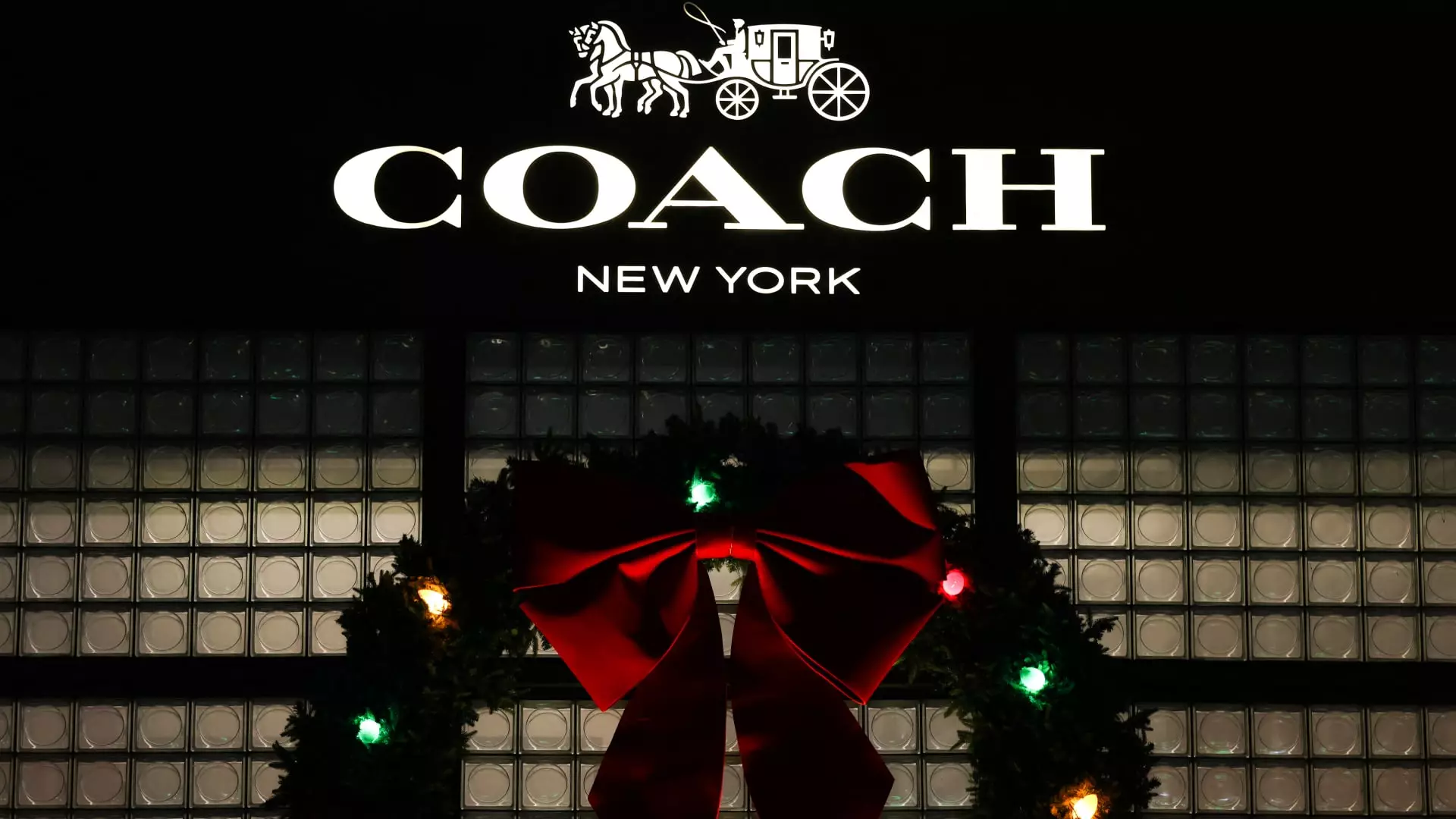Tapestry, the parent company of iconic brands like Coach, Kate Spade, and Stuart Weitzman, experienced a significant surge in its stock prices—an impressive jump of about 12%—following the announcement of robust financial results for the critical holiday quarter. Investors reacted favorably after the company not only exceeded sales expectations but also elevated its full-year projections, forecasting revenue in excess of $6.85 billion, a 3% increase from the previous year. Earnings per share (EPS) estimates were also revised upward to a range of $4.85 to $4.90, representing a distinct improvement over prior forecasts that had predicted lower revenue and earnings. Such a shift in outlook showcases Tapestry’s underlying strength and resilience in a competitive marketplace.
The positive results from Tapestry contrast sharply with those reported by Capri, which operates luxury brands such as Versace and Michael Kors. Capri’s recent downturn in sales—specifically, a double-digit decline for its major brands—reflects the struggles some fashion companies are facing amid changing consumer preferences and economic conditions. Tapestry CEO Joanne Crevoiserat highlighted the importance of delivering “innovation, relevance, and value,” stating that these brand-building principles have been pivotal in winning over consumers during economically uncertain times.
The backdrop of Tapestry’s surge is particularly intriguing given its recent decision to call off a proposed merger with Capri. This decision came just two months prior, after a long legal battle aimed at gaining regulatory approval for the merger. The cancellation of this high-profile merger marks a strategic pivot for Tapestry, as it now turns its focus inward to bolster the performance of its existing brands. Instead of pursuing further acquisitions, Crevoiserat emphasized a commitment to ensuring that Coach maintains its growth trajectory while revitalizing Kate Spade.
An essential aspect of Tapestry’s strategy involves rigorous brand differentiation and community engagement. The company aims to reconnect with its customer base through innovative product offerings rather than aggressive discounting, particularly for Kate Spade, which is seen as needing revitalization. The new leadership at Kate Spade, including fresh ideas from Eva Erdmann, will be key to steering the brand toward sustainable growth.
Geographically, Tapestry is witnessing varied performance across its markets. North America remains the company’s largest market, contributing nearly 70% of its sales. However, the significant revenue growth in Europe—boasting an impressive 45% increase during the holiday quarter—signals a potential pivot in focus. This can be attributed to Tapestry’s concerted efforts to tap into underrepresented markets. Tapestry’s strategy includes heightened customer acquisition efforts targeting younger demographics, particularly Gen Z and millennials. More than half of the 2.7 million new customers acquired in North America were from these generational cohorts, indicating a successful connection with a new audience.
However, it is worth noting that while Tapestry’s performance in Europe and North America was strong, sales in Japan exhibited a downward trend, declining by 5% year over year. This provides a nuanced view of Tapestry’s international presence and reinforces the need for strategic adaptations in varying regions.
Product innovation remains a pivotal pillar for Tapestry’s growth. In the holiday quarter, the Coach brand stood out as a top performer, marking an 11% year-over-year increase in revenue. Popular items like the Tabby shoulder bag have resonated well with customers, providing an avenue for Tapestry to explore further creativity in its collections. The strategy to introduce limited handbag styles while working to create more blockbuster offerings—essentially building brand loyalty through well-loved products—could strengthen Tapestry’s market position if executed properly.
Moreover, a critical aspect of Tapestry’s branding efforts is to reduce reliance on discounts, which can dilute brand prestige. By focusing on compelling, innovative products, Tapestry is carving a space that embraces exclusivity while also fostering a deeper connection with consumers.
Tapestry illustrates a narrative of resilience, adaptability, and focused growth in a challenging retail environment. With a clear trajectory outlined after its robust quarterly performance, the company is poised for potential long-term gains. By prioritizing brand strength over merger activity, investing in consumer engagement, and fostering innovation in product offerings, Tapestry is strategically positioning itself to not only weather economic uncertainties but emerge stronger in the luxury fashion sector. The future of Tapestry appears not only promising but also indicative of an evolving approach to modern luxury retailing, one that balances growth with sustainability.

